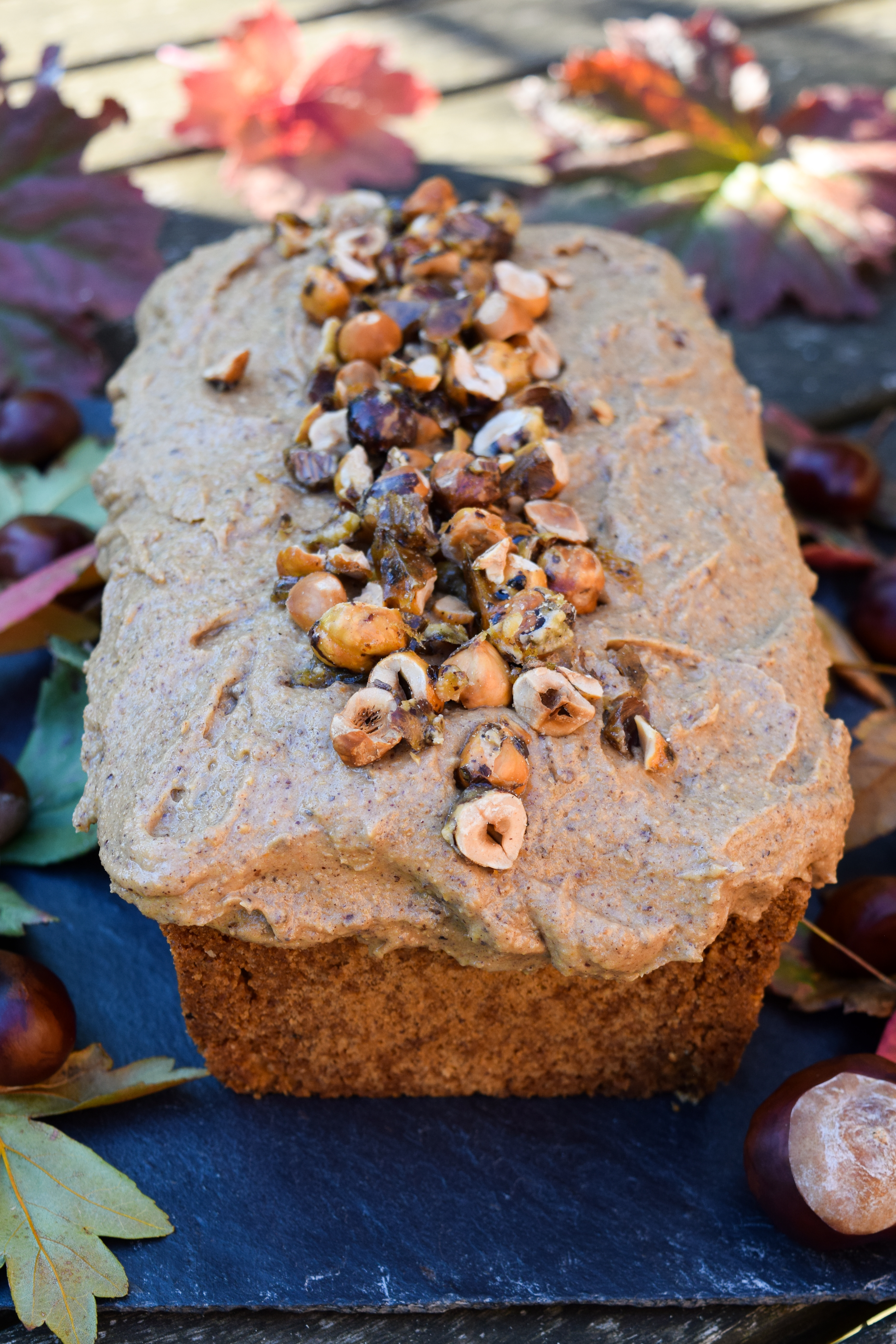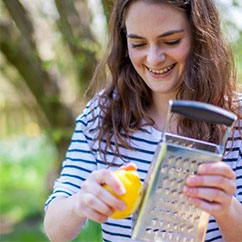Description
This indulgent loaf cake topped with homemade hazelnut praline is perfect to celebrate the start of autumn.
Ingredients
For The Cake
- 90g (3 oz) Hazelnuts
- 200g (7 oz) Plain (All Purpose) Flour
- 1 1/2 tsp Baking Powder
- 1/4 tsp Sea Salt
- 110g (4 oz) Unsalted Butter, at room temperature
- 300g (10 1/2 oz) Golden Caster Sugar
- 1 tsp Vanilla Bean Paste
- 2 Large Eggs
- 210ml (7 1/4 fl oz) Double Cream
For the Praline Topping
- 200g (7 oz) Hazelnuts
- 200g (7 oz) Golden Caster Sugar
- 240 ml (8 fl oz) Double Cream
- Sea Salt
Instructions
- Pre-heat the oven to 180 degrees (160 if you’re using a fan oven, which is 350 or 320 Fahrenheit). Lightly butter a 2 lb loaf tin (the bigger of the two standard sizes) taking care to get a good amount of butter into the corners to stop the cake from sticking – believe it or not, but the corners you actually see in these pictures are bonded back on with a dab of creme fraiche – I did not do the job well enough the second time I made this! Cut a strip of baking parchment as wide as the bottom of the tin so you can line the base and two of the sides.
- To make the cake, blitz the hazelnuts in a food processor until you have a fine flour, like the texture of ground almonds, and combine that with the flour, baking powder and sea salt in a small bowl.
- In a bigger bowl, beat together the butter, sugar and vanilla bean paste either by hand or using an electric whisk. When the mixture is pale and light, beat in the eggs, one by one.
- Add 1/3 of the flour mixture and beat into the batter. Then add 1/3 of the cream, and alternate beating in the flour mixture and the cream until everything has formed into a smooth cake batter.
- Spoon the batter evenly into your prepared cake tin and bake for 1 hour to 1 hour 10 minutes until the cake is risen, golden and you can insert a cake tester or toothpick into it and it comes back clean.
- While the cake is in the oven, make the praline. Line a large baking tray with baking parchment.
- Heat the hazelnuts in a large, non-stick frying pan over a medium heat until they are very hot to the touch, then add the sugar. Now, making praline is not scary. If you remember you can always lower the heat and stir the nuts, not much can go wrong. Stir the sugar occasionally until it starts to melt a little, then stir the sugar into the melty patches. You want to melt the sugar completely to coat the nuts and to have a nice deep caramel colour, but not to be dark brown as burnt sugar is not very tasty! My two biggest tips here is to just turn the heat down or temporarily remove the pan from the heat if you feel things are going too fast for you, and not to worry if the sugar does not totally melt when it coats the nuts and you still have a few crystals; you can always choose your best nuts for the decoration, and the rest will be whizzed up anyway. You’ll get a better praline every time you make it, practice makes perfect!
- Once the nuts are coated in the caramel, use a heatproof spatula (depending on your spatula oiling it a little with a flavourless oil sometimes helps) scrape it onto the baking sheet and quickly spread it into a single layer.
- Allow the praline to cool until you can happily use a large knife to roughly chop it. Set a handful aside to decorate.
- Blitz about 1/4 of the remaining praline in a food processor until you have a nut butter-like paste. Add 1/4 of the cream and blitz until smooth, and continue until you have a thick, smooth paste.
- To assemble the cake, run a sharp knife carefully around the edge of the loaf tin to help release the sponge as soon as it comes out of the oven. After 10 minutes, turn it out onto a rack to cool completely.
- Spread the praline across the top of the cake, and decorate with the remaining nuts. Allow the praline to set in a cool place for about 20 minutes before slicing.
Notes
You’ll need to cut thicker slices when you first serve the cake as the crumb is very moist, light and will easily crumble if the slices are too slim. After the cake has been in the fridge over night and the weight of the praline topping has compressed the crumb a little you’ll be able to cut it into much thinner slices.













Discussion